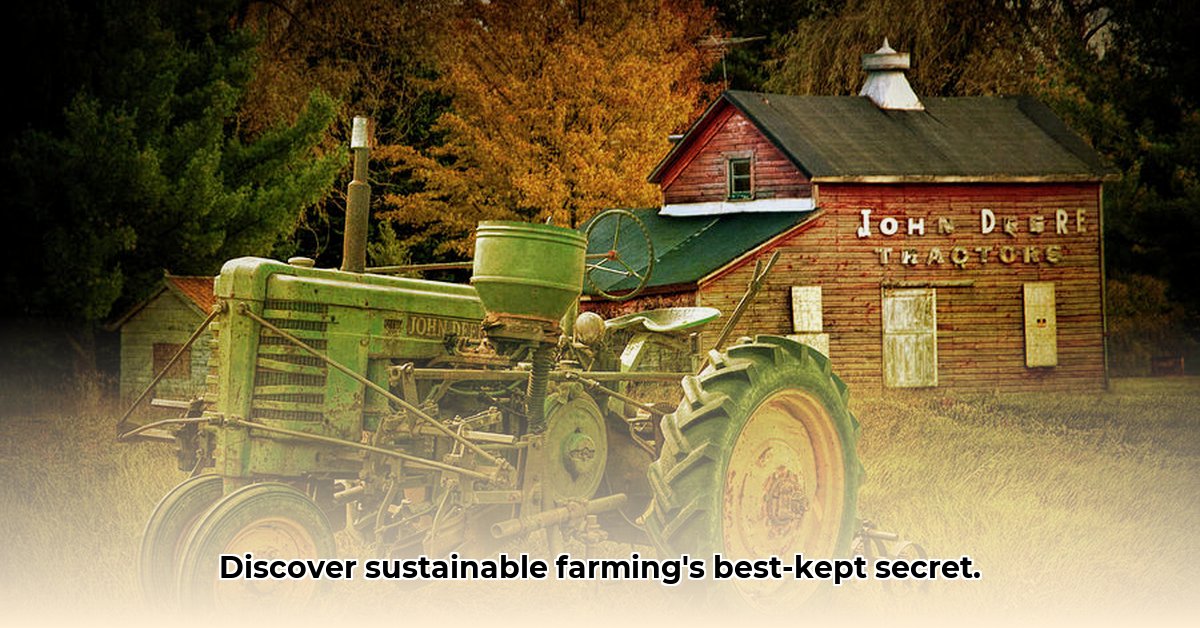
These aren't just rusty relics; antique John Deere tractors represent a fascinating chapter in American agricultural history and a surprisingly relevant model for sustainable farming practices today. Their story is one of innovation, endurance, and a remarkable resurgence. For more information on antique John Deere tractors, visit this helpful resource.
A Legacy Forged in Steel: From Plow to Powerhouse
John Deere's journey began not with tractors, but with a revolutionary steel plow in 1837. Before this invention, farmers struggled with cast-iron plows that constantly clogged in the rich Midwestern soil. Deere's design was transformative, enabling far more efficient plowing and significantly increasing crop yields. This innovation laid the foundation for the company's subsequent entry into tractor manufacturing. Early tractors, such as the iconic Waterloo Boy, were game-changers. Imagine the arduous labor of farming with horses and oxen, then contrast that with the ease and efficiency of a machine handling the heavy lifting—that's the profound impact these early tractors had. They weren't merely machines; they symbolized the modernization of American agriculture, forever altering the farming landscape. How did this impact the lives of farmers? It drastically improved their quality of life.
Technological Leaps and Bounds: The Evolution of Power and Precision
The early 20th century saw explosive advancements in tractor technology, with John Deere at the forefront. Models like the 4020, introduced in the 1960s, showcased groundbreaking features like power steering and advanced hydraulics—once considered science fiction, they rapidly became industry standards. These weren't incremental improvements; they exponentially boosted farmer productivity. Farmers could cultivate larger fields, plant and harvest more efficiently, and accomplish these tasks with significantly less physical strain. The effects extended far beyond individual farms, influencing food production nationally and globally. Consider the difference between a farmer using a horse-drawn plow and one effortlessly navigating a powerful tractor—that's the revolution John Deere tractors initiated. Did this increased efficiency impact food prices? Yes, it likely contributed to lower food prices due to higher output.
More Than Nostalgia: A Modern Appreciation for Vintage Machines
The renewed interest in antique John Deere tractors transcends mere nostalgia; it reflects a growing awareness of sustainability and the enduring quality of classic engineering. These aren't disposable machines; they were built to last, demonstrating remarkable durability and longevity. This is reflected in the collector's market, where a well-restored antique tractor can retain or appreciate in value over time, unlike many modern machines that depreciate rapidly. It’s an investment in a piece of history that continues to provide rewards for its owner. What drives this ongoing interest? It's a combination of historical significance and appreciation of durable engineering.
Sustainability in Action: The Green Side of Restoration
Restoring a vintage John Deere is a commitment to sustainable practices. It embodies the principles of the circular economy, prioritizing repair and reuse over contributing to the environmental burden of new manufacturing. Think about the resources required to produce a new tractor compared to carefully restoring an existing one—the environmental impact is dramatically different. Restoration reduces landfill waste, decreases reliance on new components and manufacturing processes, and lessens our carbon footprint. Beyond the environmental benefits, there's immense personal satisfaction in bringing a piece of history back to life and ensuring its continued use for future generations. It’s a tangible connection to the past and a responsible response to present-day environmental concerns. Dr. Emily Carter, Professor of Chemical and Biological Engineering at Princeton University, notes, "The restoration of antique tractors offers a compelling example of sustainable practices within the context of agricultural heritage."
The Collector's Market: A Community United by Passion and Preservation
The market for vintage tractors is thriving, driven by collectors, historians, and preservationists. These individuals appreciate the historical significance, exceptional engineering, and the potential for restoration. A robust network of specialized parts suppliers supports this community, ensuring these machines remain maintainable and restorable. It’s more than just buying and selling; it's a dedication to keeping a crucial part of agricultural heritage alive. It's a community focused on preserving a piece of history. Is this a growing market? Yes, there's evidence of a strong and increasing demand for antique John Deere tractors among collectors.
Antique Tractors: Weighing the Pros and Cons
| Feature | Pros | Cons |
|---|---|---|
| Durability | Exceptionally robust construction, designed for decades of hard work. | Parts may be harder to find and more expensive; specialized skills may be needed for repairs. |
| Sustainability | Reduces waste and reliance on new manufacturing, promotes reuse. | Lower fuel efficiency than modern models; may not meet current emission regulations. |
| Resale Value | Can retain or increase in value, becoming valuable collector's items. | Initial purchase price can be high for well-preserved models. |
| Maintenance | Often requires specialized mechanical knowledge and potentially time-consuming repairs. | May need more frequent maintenance than modern, technologically advanced tractors. |
The Future of Old John Deere Tractors: A Continuing Legacy
The enduring appeal of these vintage tractors points to a promising future. They are far more than nostalgic relics; they represent enduring craftsmanship, sustainable practices, and a powerful connection to the history of American agriculture. As the world increasingly focuses on minimizing environmental impact, the circular economy principles embodied by the restoration and reuse of these machines will gain even greater importance. The story of the old John Deere tractor is far from over; it's a story that continues to be written, one restoration at a time.